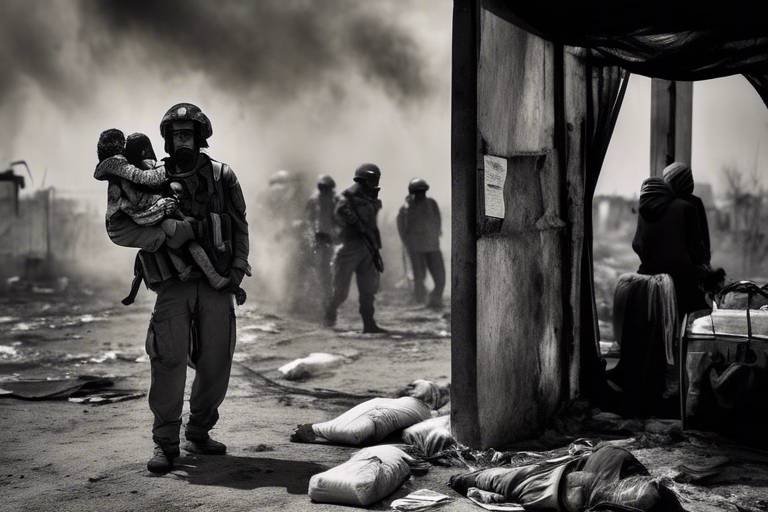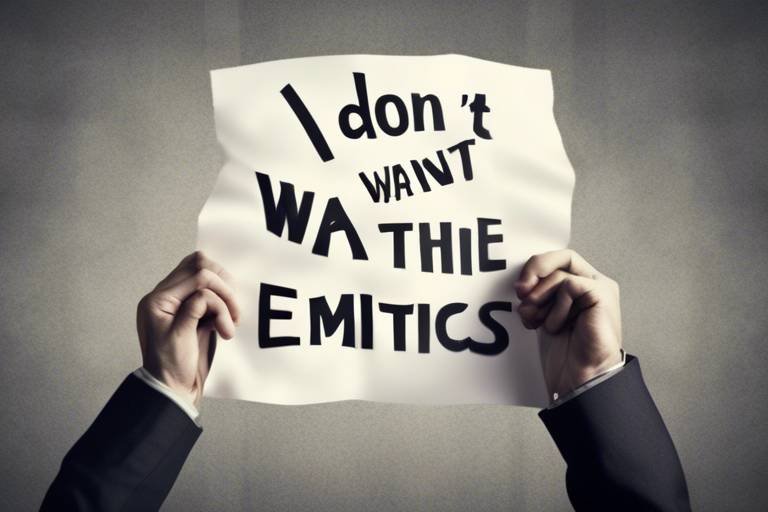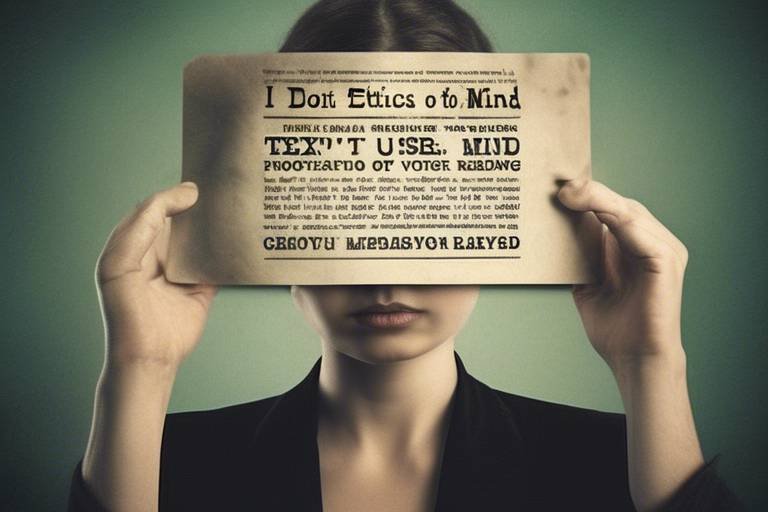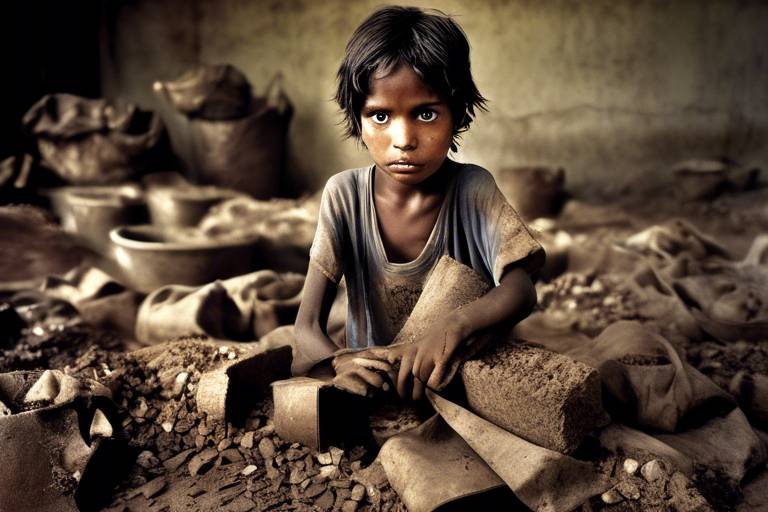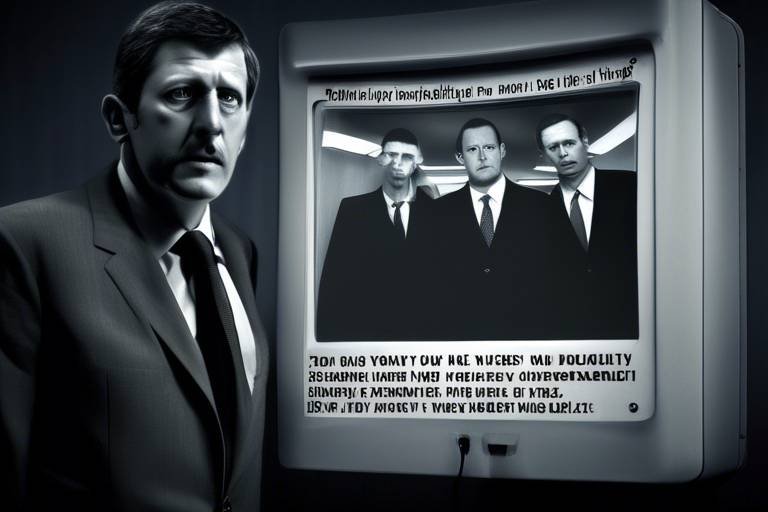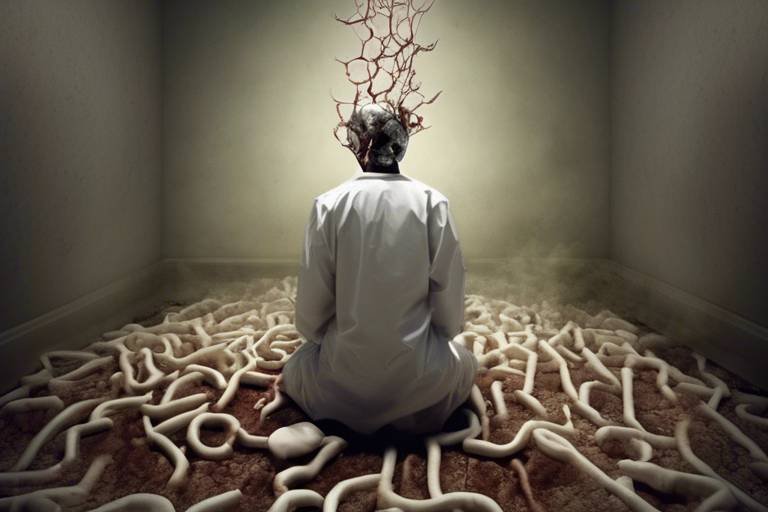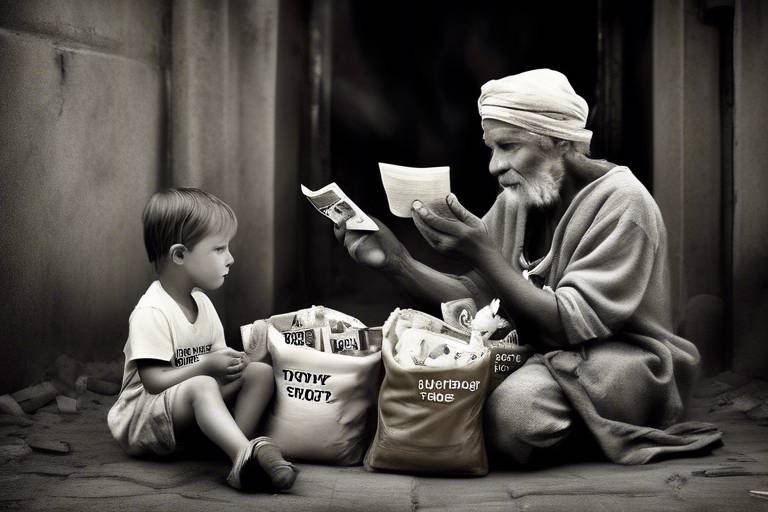Understanding the Ethics of Photojournalism
In the world of visual storytelling, photojournalism stands as a beacon of truth and responsibility. It is not just about taking pictures; it’s about capturing the essence of moments that can change lives, shape opinions, and influence societies. As photojournalists wield their cameras, they carry the weight of ethical considerations that are crucial to their craft. The fine line between artistic expression and factual representation often blurs, making it imperative for photographers to navigate these waters with care and integrity. This article delves deep into the ethical landscape of photojournalism, exploring the responsibilities that come with the role, the profound impact of their work on society, and the delicate balance between truth and creativity.
Photojournalism serves as a powerful tool for storytelling and raising awareness about social issues. In a world inundated with information, images have the ability to transcend language barriers and evoke emotions that words sometimes cannot. They can illuminate the darkest corners of society, bringing to light injustices that demand attention. Think about it: a single photograph can spark movements, change laws, and even alter the course of history. This significance in shaping public opinion and informing communities cannot be overstated.
Understanding the foundational ethical principles is essential for photojournalists. At the heart of this profession lies a commitment to core values that guide their work. These include:
- Accuracy: Ensuring that images accurately represent the events and subjects they depict.
- Fairness: Striving to present all sides of a story without bias.
- Context: Providing background information that enhances the viewer's understanding.
These principles are not just guidelines; they are the bedrock of credibility in photojournalism. When photographers adhere to these values, they not only uphold the integrity of their profession but also foster trust with their audience.
Truthfulness is paramount in photojournalism. It’s the foundation upon which the entire field is built. Photojournalists strive to present an accurate depiction of events, capturing the raw emotions and realities of the moments they witness. However, achieving this can be complex. The pressure to produce compelling images can sometimes lead to ethical dilemmas. How do photographers ensure that their work remains authentic while still engaging their audience? This balancing act requires a steadfast commitment to integrity and an unwavering focus on the truth.
Photographers often face numerous challenges in capturing reality. From the chaos of breaking news to the intimate moments of human experience, the task of ensuring that images reflect the truth without manipulation or bias is daunting. The very act of taking a photo can alter the scene, as subjects may pose or react differently when they know they're being photographed. Moreover, the choice of angle, lighting, and framing can significantly influence the viewer's perception. Thus, the responsibility lies heavily on the shoulders of photojournalists to maintain authenticity in their work.
Context plays a vital role in photojournalism. Without it, an image can be misinterpreted or stripped of its meaning. Providing background information enhances the viewer's understanding and interpretation of images. For instance, a powerful photograph of a protest may evoke different reactions depending on the context provided. Is it a fight for civil rights? A response to governmental oppression? By including context, photojournalists can guide the audience’s understanding and foster a deeper connection to the subject matter.
Respecting the rights and dignity of subjects is crucial in photojournalism. Photographers must navigate the ethical considerations of documenting individuals and communities with sensitivity and respect. This means obtaining consent when necessary and being mindful of the potential impact of their images on the lives of those they capture. The relationship between the photographer and their subjects should be built on trust, ensuring that the portrayal is fair and respectful. After all, every image tells a story, and the subjects deserve to have their narratives represented accurately and ethically.
Advancements in technology have transformed photojournalism in ways we could have only dreamed of a few decades ago. Digital tools and social media platforms have made it easier than ever to capture and disseminate images. However, this ease of access also brings a host of ethical challenges. The rapid spread of information can lead to misinformation, where images are taken out of context or manipulated to serve a particular narrative. Photojournalists must remain vigilant and uphold their ethical standards in this fast-paced digital landscape.
The ease of image manipulation raises significant ethical concerns. With just a few clicks, a photograph can be altered to misrepresent reality. This potential for misrepresentation in the media can have dire consequences, leading to public misinformation and damaging reputations. Photojournalists must navigate this minefield carefully, ensuring that their work remains true to the original moment captured. The integrity of photojournalism depends on the honesty and authenticity of the images presented to the public.
Balancing privacy rights with public interest is a complex ethical dilemma faced by photojournalists. While it is essential to inform the public about significant events, it is equally important to respect the privacy of individuals involved. This challenge often arises in sensitive situations, such as documenting tragedies or personal crises. Photojournalists must weigh the potential benefits of publishing an image against the possible harm it may cause to the subjects. This ethical tightrope walk requires not only skill but also a deep sense of empathy and responsibility.
- What are the main ethical principles of photojournalism? The core principles include accuracy, fairness, and context.
- How does technology impact photojournalism ethics? Technology facilitates rapid image sharing but also increases the risk of manipulation and misinformation.
- Why is context important in photojournalism? Context helps viewers understand the significance of an image and prevents misinterpretation.
- How can photojournalists respect subjects' rights? They can obtain consent and portray individuals with dignity and respect.

The Role of Photojournalism in Society
Photojournalism is not just about snapping pictures; it’s a dynamic storytelling medium that captures the essence of human experience. Imagine flipping through a magazine or scrolling through your social media feed, and coming across an image that makes you stop and think. That’s the power of photojournalism! It serves as a vital tool for raising awareness about social issues, bringing to light stories that might otherwise remain hidden in the shadows.
Throughout history, photojournalism has played a crucial role in shaping public opinion and informing communities. By documenting events, struggles, and triumphs, photojournalists act as the eyes and ears of society, providing a visual narrative that complements written journalism. This combination of images and text helps create a deeper understanding of complex issues. For instance, consider the impact of iconic photographs from the civil rights movement or war zones. These images not only evoke emotions but also challenge viewers to question their beliefs and actions.
Moreover, photojournalism has the unique ability to transcend language barriers, making it a universal medium. A single photograph can convey a powerful message, often more effectively than words alone. This is particularly important in our increasingly globalized world, where the stories of diverse cultures and communities need to be shared and understood. By capturing moments of joy, sorrow, struggle, and resilience, photojournalists help foster empathy and connection among people from different backgrounds.
In today's digital age, the role of photojournalism has expanded even further. With the rise of social media platforms, images can be shared instantly, reaching a global audience in seconds. This immediacy can amplify the impact of a story, but it also comes with challenges. The speed at which information spreads can lead to misinformation or misinterpretation, making it essential for photojournalists to adhere to strong ethical standards. They must navigate the fine line between truth and sensationalism, ensuring that their work contributes positively to public discourse.
Ultimately, the role of photojournalism in society is multifaceted. It serves to:
- Inform the public about important issues and events.
- Inspire action and change through compelling visual narratives.
- Document history as it unfolds, preserving moments for future generations.
- Foster empathy and understanding among diverse communities.
In conclusion, photojournalism is a powerful vehicle for communication that shapes our perceptions and encourages us to engage with the world around us. It’s not merely about capturing images; it’s about telling stories that matter, challenging injustices, and ultimately, making a difference in society.

Ethical Principles in Photojournalism
Photojournalism is not just about capturing stunning images; it’s about telling stories that matter and doing so with integrity. The ethical principles that govern this field are crucial for maintaining trust and credibility with the audience. At the heart of photojournalism lies a set of core values that guide photographers in their quest to document reality. These principles include accuracy, fairness, and the importance of context. Each of these elements plays a vital role in ensuring that the images we see are not only compelling but also truthful representations of the world around us.
One of the most fundamental ethical principles is truthfulness. For photojournalists, this means striving to present an accurate depiction of events without manipulation or bias. In an age where images can be easily altered, the commitment to truth becomes even more significant. Photographers must navigate the fine line between artistic expression and factual representation, a challenge that often requires them to make difficult choices in the field. Are they capturing the moment as it is, or are they framing it in a way that could mislead the viewer? This question is at the forefront of ethical photojournalism.
Moreover, the importance of context cannot be overstated. A powerful image can evoke strong emotions and provoke thought, but without the right context, it can lead to misinterpretation. Providing background information about the subject matter not only enhances the viewer's understanding but also fosters a deeper connection to the story being told. For instance, an image of a protest can be interpreted in numerous ways depending on the context provided—whether it’s a local issue or part of a larger global movement. Thus, context serves as a critical anchor that helps ground the viewer's perception.
Respecting the rights and dignity of individuals portrayed in photographs is another cornerstone of ethical photojournalism. Photographers must always be mindful of the impact their work can have on the lives of those they document. This includes obtaining consent when necessary, being sensitive to cultural norms, and considering the potential repercussions of their images on the subjects' lives. The ethical responsibility extends beyond just capturing a moment; it involves a commitment to ensuring that subjects are treated with respect and dignity.
In summary, the ethical principles in photojournalism are not just guidelines; they are the foundation upon which the profession stands. By adhering to these values, photojournalists can build trust with their audience and contribute to a more informed society. As we navigate an increasingly complex media landscape, the importance of these ethical considerations will only continue to grow.
- What are the main ethical principles in photojournalism? The main principles include accuracy, fairness, and the importance of context.
- Why is truthfulness important in photojournalism? Truthfulness ensures that the audience receives an accurate representation of events, which is essential for maintaining credibility.
- How does context affect the interpretation of photographs? Context provides background information that helps viewers understand the circumstances surrounding an image, leading to a more informed interpretation.
- What responsibilities do photojournalists have towards their subjects? Photojournalists must respect the rights and dignity of their subjects, which includes obtaining consent and being sensitive to cultural norms.

Truthfulness and Accuracy
In the realm of photojournalism, truthfulness and accuracy are not just ideals; they are the very foundation upon which the profession stands. A photojournalist is often the bridge between an event and the public's understanding of it. This responsibility weighs heavily, as the images captured can shape perceptions and influence opinions. So, how do photojournalists ensure that their work remains true to reality? The answer lies in a commitment to presenting an accurate depiction of events, which calls for a delicate balance between artistic expression and journalistic integrity.
One might wonder, what does it really mean to be truthful in this field? It means that every photograph should tell a story that is not only compelling but also honest. When a photojournalist captures an image, they are tasked with the challenge of ensuring that the moment is represented in its most authentic form. This includes avoiding any form of manipulation that could skew the viewer's perception. For instance, while editing is a standard practice in photography, the line between enhancement and distortion can sometimes blur. Photographers must navigate this fine line carefully, as even minor adjustments can lead to significant misinterpretations of the truth.
Moreover, the ethical implications of accuracy extend beyond just the images themselves; they encompass the broader narrative being told. For example, consider a photo that depicts a protest. If the image captures only a small segment of the crowd, it might give the impression that the protest is less significant than it truly is. This is where context becomes essential. Providing background information about the event, including the reasons behind it and the scale of participation, can greatly enhance the viewer's understanding. Without this context, the truth can easily be lost in translation.
In the pursuit of truthfulness, photojournalists often face various challenges. One major challenge is the pressure of deadlines. In today's fast-paced media landscape, the demand for immediate coverage can lead to hasty decisions. Photographers may feel compelled to publish images quickly, sometimes at the expense of thorough verification. This rush can result in the dissemination of misleading or inaccurate information, which can have far-reaching consequences.
Another significant challenge is the subjectivity of perception. What one person sees as a truthful representation, another may view as biased or incomplete. This subjectivity can lead to heated debates about the integrity of a photograph. To combat this, many photojournalists adhere to a set of ethical guidelines that emphasize the importance of honesty and transparency in their work. These guidelines serve as a compass, guiding them through the murky waters of ethical dilemmas.
In conclusion, truthfulness and accuracy in photojournalism are not just about capturing striking images; they are about honoring the stories behind those images. By striving for authenticity and providing necessary context, photojournalists can ensure that their work contributes positively to public discourse. Ultimately, the goal is to foster a more informed society, where the truth prevails over sensationalism.
- What is the importance of truthfulness in photojournalism?
Truthfulness is crucial as it ensures that the images presented accurately represent events, shaping public perception responsibly. - How do photojournalists maintain accuracy in their work?
Photojournalists maintain accuracy by adhering to ethical guidelines, providing context, and avoiding manipulation of images. - What challenges do photojournalists face regarding truth and accuracy?
Challenges include time constraints, the pressure to publish quickly, and the subjective nature of perception.

Challenges in Capturing Reality
Capturing reality in photojournalism is akin to walking a tightrope; it's a delicate balance between portraying **truth** and navigating the **complexities** of human emotion and context. Photographers often find themselves in intense situations, where the pressure to document events can clash with the ethical responsibility to represent them accurately. This means that every click of the shutter carries not just the weight of a moment but also the implications of how that moment will be perceived by the audience.
One of the primary challenges is the **instantaneous nature** of news coverage. In our fast-paced world, photojournalists are often required to deliver images almost immediately. This urgency can lead to hasty decisions that might compromise the integrity of the image. For instance, a photographer might choose a shot that is visually striking but lacks the necessary context to fully convey the story. The result? A powerful image that tells a **partial truth** rather than the whole story.
Moreover, the environment in which photojournalists work can be unpredictable and chaotic. They often find themselves in war zones, natural disasters, or protests where emotions run high. In such scenarios, the challenge lies not only in capturing the action but also in ensuring that the **human element** is respected. A powerful photograph can evoke a strong emotional response, but it can also exploit vulnerability if not handled with care. For example, consider a photo of a grieving family after a tragedy; while it might highlight the impact of an event, it also raises questions about the **ethics of intrusion** into personal grief.
Another significant hurdle is the potential for **bias**. Photographers, like all humans, have their own perspectives and biases that can inadvertently influence how they frame a shot. This subjectivity can lead to a representation that skews reality, intentionally or not. The challenge, therefore, is to maintain a level of **objectivity** while still conveying the emotional weight of the story. It’s a tough call—do you prioritize the emotional impact of an image, or do you strive for a more neutral representation? The answer is often not clear-cut.
Lastly, the rise of **digital manipulation** adds another layer of complexity to the challenges faced by photojournalists. With advanced editing tools at their disposal, the temptation to alter images for dramatic effect can be overwhelming. However, this manipulation poses serious ethical questions. At what point does enhancing an image cross the line into misrepresentation? The challenge for photojournalists is to navigate these tools responsibly, ensuring that their work remains a **true reflection** of reality rather than a crafted illusion.
In conclusion, the challenges of capturing reality in photojournalism are multifaceted and require a deep commitment to ethical principles. As photographers strive to tell compelling stories, they must also remain vigilant about the implications of their work on public perception and the subjects they portray. The responsibility lies not just in capturing a moment but in ensuring that the moment is presented with **integrity** and respect.
- What is the primary goal of photojournalism? The primary goal is to tell stories through images that inform the public about events and social issues.
- How do photojournalists ensure accuracy in their work? They strive to capture images that reflect the truth of the situation, often by providing context and avoiding manipulation.
- What ethical dilemmas do photojournalists face? They often grapple with issues of privacy, the impact of their work on subjects, and the balance between artistic expression and factual representation.
- How has technology changed photojournalism? Technology has made it easier to capture and disseminate images rapidly, but it has also introduced new challenges regarding manipulation and ethical standards.

Importance of Context
When it comes to photojournalism, context is not just an added bonus; it is a critical element that breathes life into images. Imagine walking through an art gallery filled with stunning photographs. Without the accompanying stories or background information, those images may evoke feelings but lack the depth that comes from understanding the circumstances behind the shot. Context provides the essential framework that allows viewers to grasp the significance of what they see, transforming a mere photograph into a powerful narrative.
In the world of photojournalism, context serves multiple purposes:
- Enhances Understanding: Context helps viewers comprehend the why and how behind an image. For instance, a photograph of a protest can be interpreted in various ways depending on the background information provided—what caused the protest, who is involved, and what the desired outcome is.
- Prevents Misinterpretation: Without context, images can easily be misinterpreted. A photograph taken out of context can lead to misleading conclusions that may harm individuals or communities. For example, an image of a person in distress might be seen as a sign of weakness without understanding the broader social issues at play.
- Fosters Empathy: Context allows viewers to connect emotionally with the subject matter. When people learn the stories behind the images, they are more likely to feel empathy and compassion, which can drive social change.
Moreover, the integration of context into photojournalism is not merely about adding captions or descriptions. It involves a deeper responsibility to present the truth and the whole picture. This means that photojournalists must strive to provide comprehensive background information that includes historical, cultural, and social dimensions. For example, when covering a natural disaster, it’s essential to include details about the affected community's prior conditions, the resources available to them, and the global response to the crisis.
Ultimately, the importance of context in photojournalism cannot be overstated. It is the thread that weaves together the fabric of storytelling, ensuring that images resonate with viewers on multiple levels. By offering the necessary background and insights, photojournalists not only enhance the viewer's experience but also uphold the integrity of their craft. In a world inundated with visuals, the responsibility of providing context becomes even more crucial, as it empowers audiences to engage thoughtfully with the issues at hand.
- Why is context important in photojournalism? Context helps viewers understand the significance of an image, preventing misinterpretation and fostering empathy.
- How can lack of context affect the perception of a photograph? Without context, photographs can be misleading, leading to incorrect conclusions and potentially harming individuals or communities.
- What role does background information play in storytelling through images? Background information enriches the narrative, allowing viewers to connect emotionally and understand the broader implications of the visual story.

Respecting Subjects’ Rights
In the world of photojournalism, the ethical obligation to respect the rights and dignity of subjects is not merely a guideline; it’s a fundamental principle that shapes the very essence of the profession. When photographers capture moments, they are not just documenting events; they are engaging with real people who have stories, emotions, and lives that extend beyond the frame of the camera. This responsibility to the subjects is paramount, as it ensures that their humanity is preserved and honored in every image.
Photographers must navigate a delicate balance between the pursuit of compelling visuals and the necessity of obtaining consent from their subjects. It’s essential for photojournalists to ask themselves: How would I feel if I were in their shoes? This introspection can guide them in making ethical decisions. For instance, capturing a powerful image of a person in distress can evoke strong emotions and spark conversations, but it also raises questions about privacy and exploitation.
Moreover, the context in which a photograph is taken plays a significant role in how the subject is perceived. A photograph taken in a moment of vulnerability can be interpreted in many ways, and without proper context, it can lead to misrepresentation. For photojournalists, providing context is not just about adding a caption; it’s about ensuring that the viewer understands the circumstances surrounding the image. This can enhance the viewer's empathy and create a deeper connection to the subject.
To further illustrate the importance of respecting subjects' rights, consider the following ethical considerations:
- Informed Consent: Always seek permission from individuals before photographing them, especially in sensitive situations.
- Representation: Ensure that the image accurately reflects the subject’s experience and does not perpetuate stereotypes.
- Impact Awareness: Be conscious of how the image may affect the subject’s life and reputation.
Ultimately, respecting subjects' rights is about recognizing them as individuals with dignity and agency. When photojournalists commit to ethical practices, they not only uphold the integrity of their work but also foster trust and respect within the communities they document. This trust is essential for the ongoing relationship between photographers and their subjects, ensuring that stories can be told authentically and compassionately.
- What is the importance of obtaining consent in photojournalism?
Obtaining consent is crucial as it respects the subject’s autonomy and ensures they are comfortable with how their image will be used. It also helps to build trust between the photographer and the subject. - How can photographers ensure they are not exploiting their subjects?
Photographers can avoid exploitation by being transparent about their intentions, providing context for the images, and being sensitive to the subjects' feelings and circumstances. - What role does context play in photojournalism?
Context is vital as it helps viewers understand the circumstances surrounding an image, promoting a more accurate interpretation and fostering empathy towards the subject.

The Impact of Technology on Ethics
In today’s fast-paced digital world, technology has become a double-edged sword for photojournalism. On one hand, it provides unprecedented access to powerful tools that can enhance storytelling and broaden the reach of important narratives. On the other hand, it raises significant ethical dilemmas that photojournalists must navigate carefully. The rapid evolution of digital tools, from high-resolution cameras to editing software, has transformed the way images are captured, processed, and shared. But with great power comes great responsibility, and understanding how these advancements impact ethical practices is crucial.
One of the most significant changes technology has brought to photojournalism is the ability to manipulate images easily. While photographers have always edited their work to some extent, today’s software allows for alterations that can completely change the context of a photograph. This leads to a critical question: How much manipulation is acceptable? The line between enhancing an image for clarity and altering its truth can be blurry. For instance, consider the difference between adjusting brightness and contrast versus removing elements from a scene altogether. The former might be considered ethical, while the latter could mislead viewers about the reality of an event.
Furthermore, the rise of social media has changed how images are disseminated. News can spread like wildfire, often without verification or context. This immediacy can lead to ethical oversights, where a powerful image is shared without considering its implications. An unverified photograph can go viral, potentially misrepresenting a situation or damaging reputations. In this environment, photojournalists must not only capture compelling images but also be diligent in verifying the authenticity of their work before sharing it with the world.
Another area of concern is the balance between privacy and public interest. With smartphones and social media, anyone can become a photojournalist, capturing moments that might otherwise go unnoticed. While this democratization of photography is empowering, it also raises questions about consent and the rights of individuals depicted in those images. For example, a candid shot of someone in distress may serve the public interest but can also invade their privacy. Photojournalists must weigh the importance of the story against the potential harm to individuals, making ethical considerations more complex than ever.
To illustrate the impact of technology on ethics in photojournalism, consider the following table that outlines some of the key ethical challenges:
| Ethical Challenge | Description | Technological Influence |
|---|---|---|
| Image Manipulation | Altering images can mislead viewers. | Advanced editing software makes manipulation easy. |
| Verification of Sources | Ensuring authenticity of images before publication. | Social media can spread unverified images rapidly. |
| Privacy Concerns | Balancing individual rights with public interest. | Smartphones allow for candid photography, often without consent. |
In conclusion, the impact of technology on the ethics of photojournalism is profound and multifaceted. As photojournalists navigate this new landscape, they must remain vigilant, balancing the power of their tools with a strong commitment to ethical principles. The responsibility lies not only in capturing compelling images but also in ensuring that those images serve the truth and respect the dignity of all subjects involved.
- What is the primary ethical concern in photojournalism?
The primary ethical concern is maintaining truthfulness and accuracy while respecting the rights of subjects. - How has technology changed photojournalism?
Technology has made it easier to capture and share images, but it has also introduced challenges related to manipulation and verification. - What should photojournalists consider before publishing an image?
They should consider the context, the potential impact on individuals’ privacy, and the overall truthfulness of the image.

Manipulation and Misrepresentation
In the age of digital technology, the line between reality and manipulation has become increasingly blurred. Photojournalism, which once relied on the authenticity of the captured moment, now faces the daunting challenge of ensuring that images remain true representations of events. The ease with which photographs can be altered raises significant ethical concerns, leading us to ask: how far is too far when it comes to editing images?
Manipulation in photography can take many forms, from simple color correction to more complex edits that alter the context or meaning of an image entirely. While some adjustments are necessary for enhancing clarity and presentation, the potential for misrepresentation looms large. In fact, a recent study found that over 60% of respondents believed that digitally altered images can distort public perception of reality. This statistic highlights the responsibility photojournalists have in maintaining the integrity of their work.
Moreover, the implications of misrepresentation can be profound. Consider the impact of a single photograph that has been manipulated to evoke a specific emotional response. Such images can sway public opinion, influence political decisions, or even incite social unrest. This brings us to a crucial point: the ethical dilemma of manipulation vs. authenticity. Photojournalists must navigate this treacherous terrain carefully, ensuring that their work does not mislead the audience while still conveying the intended message.
To illustrate the potential consequences of manipulation, let's look at a hypothetical scenario:
| Scenario | Outcome |
|---|---|
| A photo of a peaceful protest is edited to show violence. | Public outrage and calls for government intervention. |
| An image depicting poverty is enhanced to exaggerate the conditions. | Misinterpretation of the community’s actual situation, leading to misguided charity efforts. |
As we can see, the repercussions of altering images can ripple through society, affecting not just the immediate subjects but also the wider community. This leads us to consider the ethical guidelines that should govern the practice of photojournalism. Photographers must strive for transparency in their editing processes, often disclosing when an image has been altered and to what extent. This practice not only fosters trust with the audience but also reinforces the importance of integrity in visual storytelling.
In conclusion, the challenge of manipulation and misrepresentation in photojournalism is a pressing concern that demands vigilance and ethical consideration. As technology continues to evolve, so too must the standards that govern the profession. Photographers must remain committed to their role as truth-tellers, ensuring that their images reflect the reality of the world around us, free from distortion and bias. Only then can photojournalism continue to serve its vital purpose in society.
- What is photojournalism? Photojournalism is a form of journalism that uses photography to tell news stories and convey information.
- Why is ethics important in photojournalism? Ethics are crucial in photojournalism to maintain credibility, ensure accuracy, and respect the rights of subjects.
- How can manipulation affect public perception? Manipulated images can mislead the audience, shaping public opinion based on distorted realities.
- What are some ethical guidelines for photojournalists? Ethical guidelines include truthfulness, accuracy, respect for subjects, and transparency in editing practices.

Privacy vs. Public Interest
When it comes to photojournalism, the tug-of-war between privacy and public interest is a complex and often contentious issue. On one hand, photographers are driven by a desire to inform the public about critical events, social injustices, and human experiences. On the other hand, individuals have a right to their privacy, which can be compromised by the very act of documenting their lives or circumstances. This ethical dilemma raises important questions: How do photojournalists navigate this murky territory? What guidelines should they follow to ensure they respect individual rights while fulfilling their duty to inform?
To better understand this delicate balance, consider the following scenarios:
- Public Figures: When photographing celebrities or politicians, the expectation of privacy diminishes. However, even in these cases, ethical considerations must be taken into account. For instance, capturing a public figure in a compromising situation could be deemed exploitative.
- Victims of Tragedy: Documenting the aftermath of a natural disaster or a violent crime can serve a greater purpose by raising awareness and prompting action. Yet, it is essential for photojournalists to approach such situations with sensitivity and respect for the victims and their families.
- Protests and Social Movements: In the heat of a protest, capturing images that highlight societal issues can be powerful. However, photographers must consider whether they are infringing on the privacy of participants, especially if the images could lead to repercussions for those involved.
These examples illustrate the fine line photojournalists must walk. It’s not just about what they can capture through their lenses, but also about what they should capture. The decision to publish an image often comes with the weight of potential consequences for the subjects involved, and this is where ethical guidelines become crucial.
Moreover, the rise of social media has further complicated this issue. In an age where images can be shared instantly and widely, the potential for harm increases. A single photograph can go viral, leading to unintended consequences for individuals who may not have consented to their image being shared. As such, photojournalists must be vigilant about the ethical implications of their work, ensuring they prioritize the dignity and rights of their subjects.
Ultimately, the question of privacy versus public interest is not black and white. It requires a nuanced understanding of the context, the subjects involved, and the potential impact of the images being shared. Photojournalists must engage in continuous self-reflection and adhere to ethical standards that respect both the stories they tell and the individuals they portray.
- What is the primary ethical dilemma in photojournalism?
The main ethical dilemma is balancing the need to inform the public with the rights of individuals to maintain their privacy. - How can photojournalists respect privacy while fulfilling their role?
By being sensitive to the context and potential consequences of their images, and by following established ethical guidelines. - What role does social media play in photojournalism ethics?
Social media can amplify the reach of images, increasing the risk of privacy violations and ethical breaches.
Frequently Asked Questions
- What is the primary role of photojournalism in society?
Photojournalism serves as a powerful storytelling tool that raises awareness about social issues. It plays a crucial role in shaping public opinion and informing communities about events, enabling people to understand the world around them better.
- What are the key ethical principles that guide photojournalists?
Photojournalists adhere to several core ethical principles, including accuracy, fairness, and respect for the subjects they photograph. These principles ensure that their work is credible and that they honor the dignity of individuals and communities.
- How do photojournalists maintain truthfulness and accuracy in their work?
Truthfulness is paramount in photojournalism. Photographers strive to present an accurate depiction of events by avoiding manipulation and bias, ensuring that their images reflect reality as closely as possible.
- What challenges do photojournalists face when capturing reality?
Photographers often encounter difficulties in capturing the essence of a moment while remaining unbiased. Factors like lighting, context, and the emotional state of subjects can all influence how reality is depicted in images.
- Why is context important in photojournalism?
Context is vital in photojournalism because it provides background information that enhances the viewer's understanding of the images. Without context, photographs can be misinterpreted or lose their intended message.
- How do photojournalists respect the rights of their subjects?
Respecting the rights and dignity of subjects is crucial. Photojournalists must consider the ethical implications of their work, ensuring that they obtain consent and portray individuals in a respectful manner.
- What impact has technology had on photojournalism ethics?
Advancements in technology have transformed photojournalism by making it easier to capture and share images. However, this also raises ethical concerns regarding manipulation, misrepresentation, and the rapid dissemination of potentially misleading content.
- What are the ethical implications of image manipulation?
The ease of image manipulation poses significant ethical concerns in photojournalism. Altering photographs can lead to misrepresentation, which undermines the credibility of the media and can distort public perception.
- How do photojournalists balance privacy and public interest?
Balancing privacy rights with public interest is a complex ethical dilemma. Photojournalists must carefully consider the potential consequences of their work on individuals while also fulfilling their duty to inform the public.

